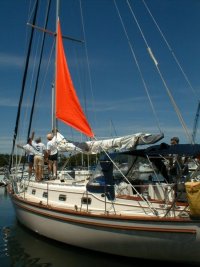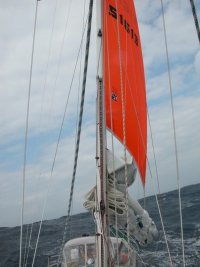Walter Pearson
Member III
I've always thought it might be useful to carry a trysail, but also thought it should be able to be raised without having to use the existing luff groove. I can't imagine doing that single-handed under the conditions that this sail would be employed. I'm thinking it should have the capability of being secured around the outside of the mast. I've seen those loops with rollers attached to each one, but without the proper name, my searches for construction details have not been successful. Any ideas on what they are called or where there might be information about them? Thanks for any info.


